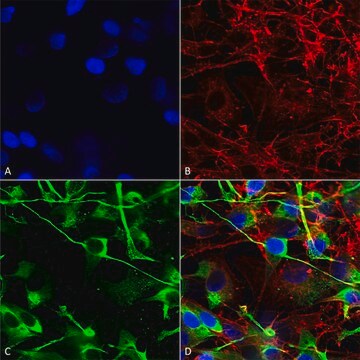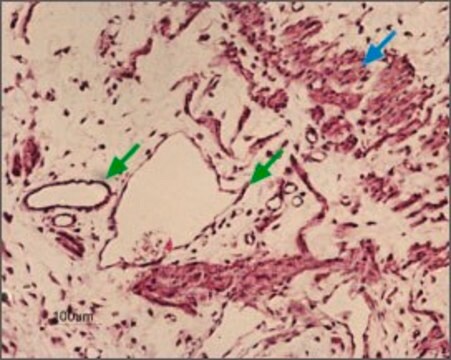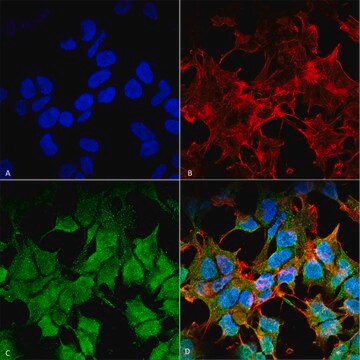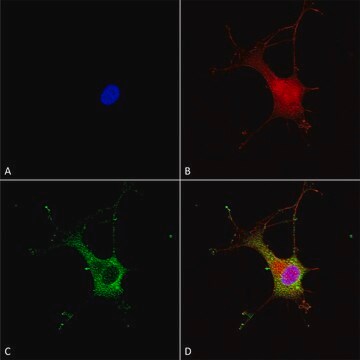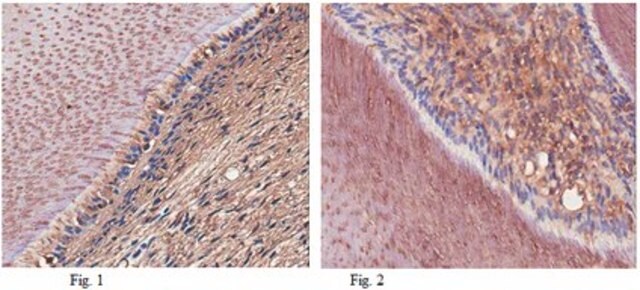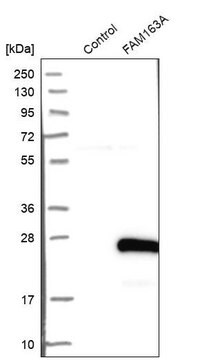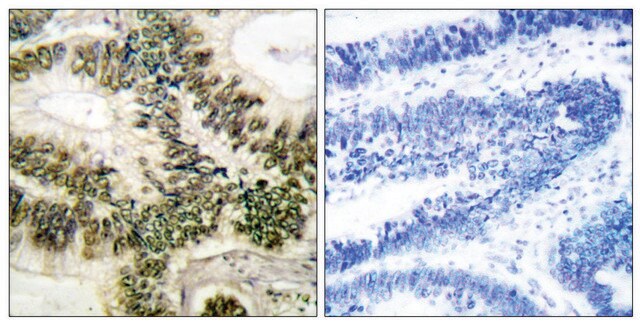MABS1704
Anti-Potassium Channel Kir6.2 Antibody, clone 10C1.1
clone 10C1.1, from mouse
Synonim(y):
ATP-sensitive inward rectifier potassium channel 11, IKATP, Inward rectifier K(+) channel Kir6.2, Potassium channel, inwardly rectifying subfamily J member 11
About This Item
Polecane produkty
pochodzenie biologiczne
mouse
Poziom jakości
forma przeciwciała
purified immunoglobulin
rodzaj przeciwciała
primary antibodies
klon
10C1.1, monoclonal
reaktywność gatunkowa
human, rat
metody
western blot: suitable
izotyp
IgG1κ
numer dostępu NCBI
numer dostępu UniProt
docelowa modyfikacja potranslacyjna
unmodified
informacje o genach
human ... KCNJ11(3767)
Opis ogólny
Specyficzność
Immunogen
Zastosowanie
Signaling
Ion Channels & Transporters
Jakość
Western Blotting Analysis: A 1:1000 dilution of this antibody detected potassium channel Kir6.2 in 10 µg of human pancreas tissue lysate.
Opis wartości docelowych
Postać fizyczna
Przechowywanie i stabilność
Inne uwagi
Oświadczenie o zrzeczeniu się odpowiedzialności
Nie możesz znaleźć właściwego produktu?
Wypróbuj nasz Narzędzie selektora produktów.
Kod klasy składowania
12 - Non Combustible Liquids
Klasa zagrożenia wodnego (WGK)
WGK 1
Temperatura zapłonu (°F)
Not applicable
Temperatura zapłonu (°C)
Not applicable
Certyfikaty analizy (CoA)
Poszukaj Certyfikaty analizy (CoA), wpisując numer partii/serii produktów. Numery serii i partii można znaleźć na etykiecie produktu po słowach „seria” lub „partia”.
Masz już ten produkt?
Dokumenty związane z niedawno zakupionymi produktami zostały zamieszczone w Bibliotece dokumentów.
Nasz zespół naukowców ma doświadczenie we wszystkich obszarach badań, w tym w naukach przyrodniczych, materiałoznawstwie, syntezie chemicznej, chromatografii, analityce i wielu innych dziedzinach.
Skontaktuj się z zespołem ds. pomocy technicznej